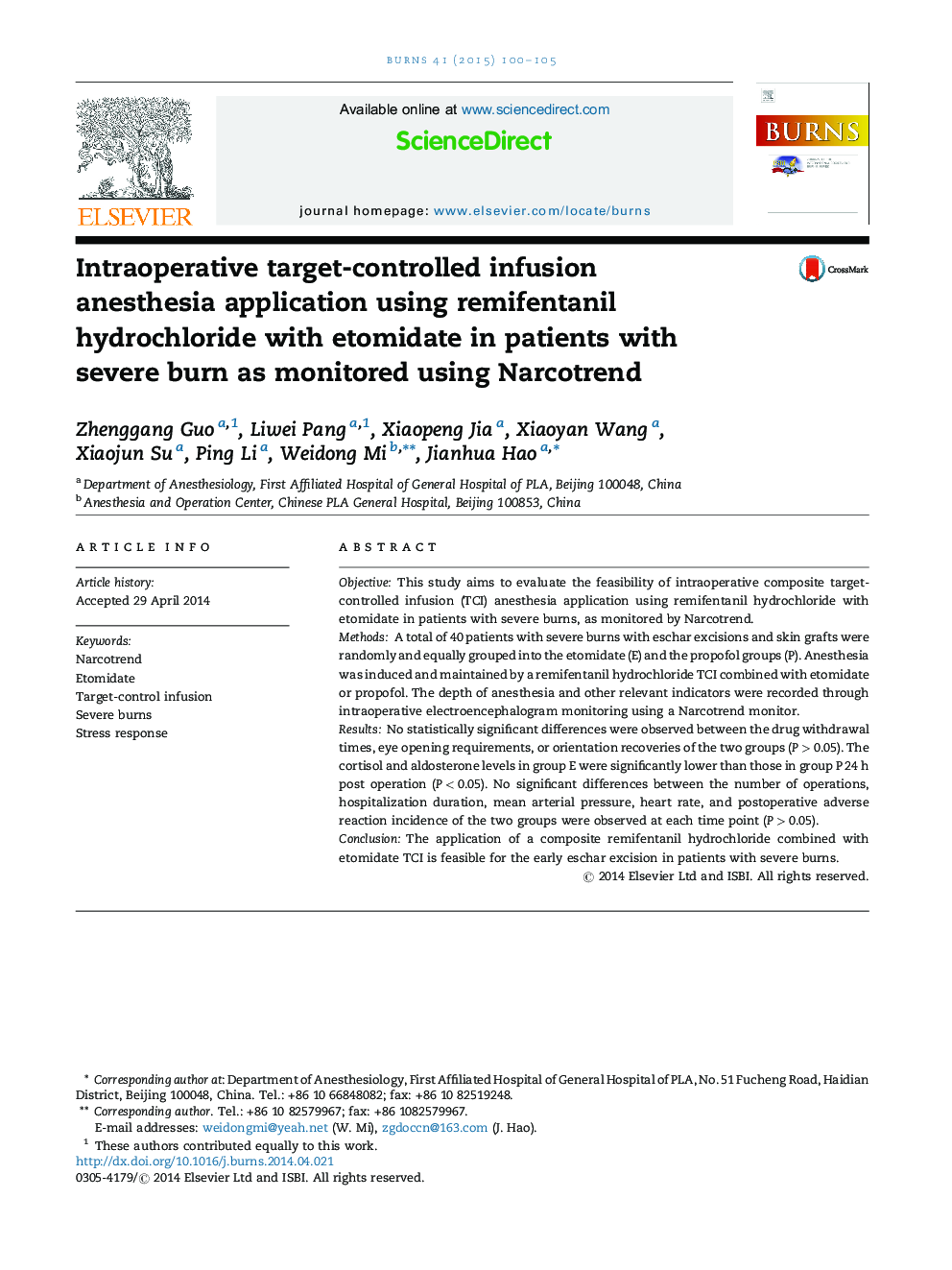| Article ID | Journal | Published Year | Pages | File Type |
|---|---|---|---|---|
| 3104221 | Burns | 2015 | 6 Pages |
ObjectiveThis study aims to evaluate the feasibility of intraoperative composite target-controlled infusion (TCI) anesthesia application using remifentanil hydrochloride with etomidate in patients with severe burns, as monitored by Narcotrend.MethodsA total of 40 patients with severe burns with eschar excisions and skin grafts were randomly and equally grouped into the etomidate (E) and the propofol groups (P). Anesthesia was induced and maintained by a remifentanil hydrochloride TCI combined with etomidate or propofol. The depth of anesthesia and other relevant indicators were recorded through intraoperative electroencephalogram monitoring using a Narcotrend monitor.ResultsNo statistically significant differences were observed between the drug withdrawal times, eye opening requirements, or orientation recoveries of the two groups (P > 0.05). The cortisol and aldosterone levels in group E were significantly lower than those in group P 24 h post operation (P < 0.05). No significant differences between the number of operations, hospitalization duration, mean arterial pressure, heart rate, and postoperative adverse reaction incidence of the two groups were observed at each time point (P > 0.05).ConclusionThe application of a composite remifentanil hydrochloride combined with etomidate TCI is feasible for the early eschar excision in patients with severe burns.
